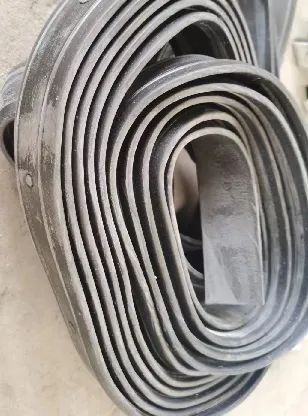loading...
- No. 9, Xingyuan South Street, Dongwaihuan Road, Zaoqiang County, Hengshui, Hebei, China
- admin@zjcomposites.com
- +86 15097380338
- Welcome to visit our website!
Cost Analysis of Fiberglass Rebar for Construction Projects and Applications
Understanding the Cost of Fiberglass Rebar A Comprehensive Overview
In recent years, the construction industry has witnessed a significant shift towards innovative materials aimed at improving durability and sustainability. Among these, fiberglass rebar has emerged as a popular alternative to traditional steel rebar. Its unique properties, including corrosion resistance, lightweight nature, and high tensile strength, make it an appealing choice for various construction projects. However, one critical aspect that many project managers and builders grapple with is the cost of fiberglass rebar. This article aims to provide a comprehensive overview of fiberglass rebar costs, helping stakeholders make informed decisions.
What is Fiberglass Rebar?
Fiberglass rebar, often made from a composite material of glass fibers and resin, is designed to provide structural support in concrete applications. Unlike traditional steel rebar, fiberglass rebar is immune to corrosion, making it an excellent choice for environments exposed to moisture, chemicals, or salts. Additionally, its lightweight nature allows for easier handling and installation, potentially reducing labor costs and time on the job site.
Cost Factors in Fiberglass Rebar
When assessing the cost of fiberglass rebar, several factors come into play. Here are the key elements that can influence pricing
1. Material Composition The quality of materials used in manufacturing fiberglass rebar can greatly impact its cost. Higher-quality composites may come with a higher price tag, but they often offer improved performance and longevity.
2. Diameter and Length Fiberglass rebar is available in various diameters and lengths to accommodate different construction needs. Generally, larger diameters and longer lengths will cost more due to the increased amount of material required.
3. Manufacturing Process The production method utilized can also affect pricing. Advanced manufacturing techniques may result in higher quality and more durable products, but these processes may incur additional costs.
fiberglass rebar cost

4. Market Demand The demand for fiberglass rebar can fluctuate based on various market conditions. When the construction sector experiences a boom, prices may increase due to high demand, whereas prices might stabilize or decrease during slower periods.
5. Location Transportation costs can significantly influence the final price of fiberglass rebar. Purchasers should consider proximity to suppliers or manufacturers, as shipping can add additional expenses.
Cost Comparison with Steel Rebar
While fiberglass rebar often comes with a higher upfront cost compared to steel rebar, a comprehensive cost-benefit analysis is essential. The initial investment in fiberglass rebar can be offset by its long-term benefits, including
- Reduced Maintenance Because fiberglass rebar is resistant to corrosion, structures using this material may require less maintenance over time, translating to cost savings in upkeep.
- Extended Lifespan The durability of fiberglass rebar can lead to a longer lifespan for infrastructure projects, potentially reducing the frequency of replacements or repairs.
- Lower Labor Costs The lightweight nature of fiberglass rebar can decrease labor costs, as fewer workers may be needed for installation, and the time required for installation can be reduced.
Conclusion
In conclusion, the cost of fiberglass rebar is influenced by various factors, including material quality, size, manufacturing techniques, market conditions, and location. While it may present a higher initial investment compared to traditional steel rebar, the long-term benefits it offers in terms of durability, maintenance, and labor can make it a cost-effective choice for many construction projects. As the construction industry continues to evolve, understanding these costs will be critical for builders and project managers seeking innovative solutions to enhance their structures' sustainability and longevity.
-
The Rise of FRP Profiles: Strong, Lightweight, and Built to LastNewsJul.14,2025
-
SMC Panel Tanks: A Modern Water Storage Solution for All EnvironmentsNewsJul.14,2025
-
GRP Grating: A Modern Solution for Safe and Durable Access SystemsNewsJul.14,2025
-
Galvanized Steel Water Tanks: Durable, Reliable, and Ready for UseNewsJul.14,2025
-
FRP Mini Mesh Grating: The Safer, Smarter Flooring SolutionNewsJul.14,2025
-
Exploring FRP Vessels: Durable Solutions for Modern Fluid HandlingNewsJul.14,2025
-
GRP Structures: The Future of Lightweight, High-Performance EngineeringNewsJun.20,2025
